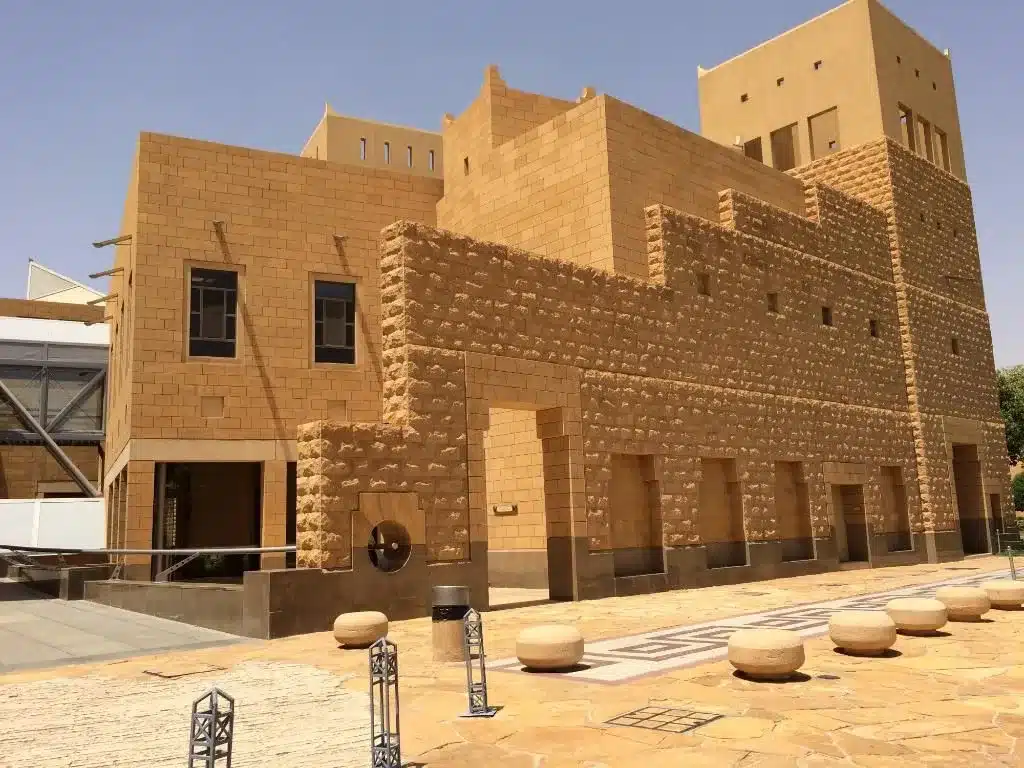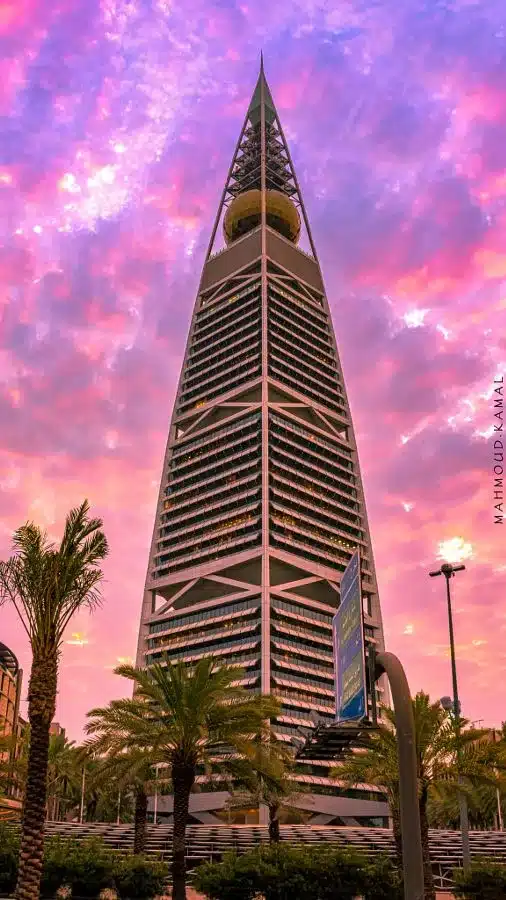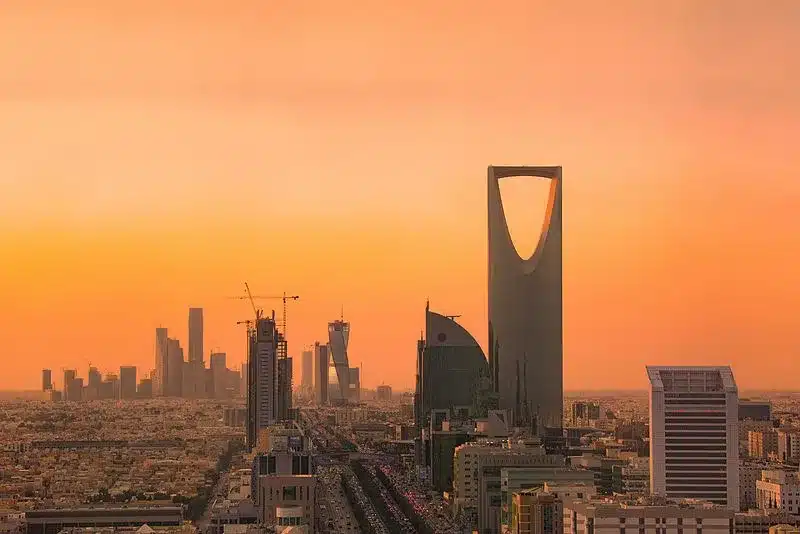Saudi Arabia, a nation standing at the crossroads of history and modernity, beckons us to embark on a comprehensive journey through its iconic landmarks. In this enriched exploration, we delve into Saudi Arabia’s diverse epochs, from pre-Islamic history to contemporary marvels. We’ll dive deeper into each section, uncovering the historical significance and architectural designs that shape the nation’s identity and aspirations.
Pre-Islamic Epoch and Archaeological Marvels
Al-Ula and Madain Saleh (Al-Hijr)
In the heart of Al-Ula lies Al-Hijr (Madain Saleh), an archaeological treasure trove. Its Nabatean architecture, carved into rose-red cliffs, pays homage to a flourishing civilization that thrived in the region. Beyond its architectural grandeur, Al-Hijr serves as a historical waypoint along ancient trade routes, connecting the Arabian Peninsula with the Mediterranean world. Inscriptions in various languages, including Aramaic and Greek, emphasize the cosmopolitan nature of this era.

Jubbah Rock Art
Across the unforgiving Saudi Arabian desert, Jubbah’s rock art offers a window into the daily lives, wildlife, and rituals of ancient inhabitants. These intricate petroglyphs showcase human adaptation in harsh climates and highlight connections between different regions through trade and cultural exchange. These historical records paint a vivid picture of the resilience and creativity of societies in this challenging environment.

Islamic Genesis and Religious Heritage
Mecca and the Kaaba
Mecca, with its spiritual epicentre, the Kaaba, is steeped in historical significance. The Kaaba’s history mirrors the evolution of Islamic architecture, from its origins built by Prophet Abraham and his son Ishmael to its current grandeur. Mecca’s transformation into a bustling metropolis underscores Saudi Arabia’s aspiration to cater to millions of annual pilgrims while preserving its spiritual heritage.

Medina and the Prophet’s Mosque
Medina’s Prophet’s Mosque is not just an architectural marvel but also a historical testament. From its humble beginnings as a structure of palm trunks and mud bricks to its iconic green dome, this mosque reflects the evolving styles of Islamic architecture. Its sprawling complex, which accommodates thousands of worshippers, demonstrates Saudi Arabia’s commitment to safeguarding its religious heritage.

Fortifications and the Birth of a Nation
Masmak Fortress
The Masmak Fortress in Riyadh symbolizes Saudi Arabia’s unification under King Abdulaziz Ibn Saud. Its thick adobe walls, watchtowers, and mud-brick construction echo Arabian fortification styles. This historical site stands as a symbol of resilience, fortitude, and determination, key elements in King Abdulaziz’s vision for a unified Saudi Arabia.

Tarout Castle and Dilmun Civilization
Tarout Castle, situated in the Eastern Province, bears witness to Saudi Arabia’s ancient history as a maritime hub. It serves as a testament to interactions between ancient civilizations, including the Dilmun Civilization. The preservation of Tarout Castle underscores Saudi Arabia’s commitment to preserving archaeological treasures and sharing them with the world.

Diriyah, the Original Capital
Diriyah, on the outskirts of Riyadh, holds a special place in Saudi Arabia’s history as the first capital of the modern Saudi state. The traditional Najdi-style architecture, exemplified by Salwa Palace, serves as a vivid reminder of the city’s historical and cultural significance. Diriyah’s restoration efforts have transformed it into a cultural and historical attraction, allowing visitors to step back in time and experience the rich tapestry of Saudi Arabia’s past.

Cultural Repositories and Architectural Heritage
National Museum of Saudi Arabia
The National Museum of Saudi Arabia in Riyadh serves as a custodian of the nation’s heritage. It offers a journey through time, spanning from prehistoric civilizations to the modern era. The museum’s exhibits shed light on Saudi Arabia’s role as a crossroads of civilizations, with artefacts from Madain Saleh and insights into the development of Islamic culture. This cultural repository plays a vital role in educating visitors about Saudi Arabia’s rich heritage and its contributions to human civilization.

King Abdulaziz Historical Centre
Housed in the Murabba Palace in Riyadh, the King Abdulaziz Historical Centre preserves the legacy of Saudi Arabia’s founder, King Abdulaziz Ibn Saud. The centre’s extensive collection of historical records and artifacts, including letters, diaries, and official documents, provides invaluable insights into Saudi Arabia’s history and political evolution. The Murabba Palace itself, with its mud-brick construction and traditional design, offers visitors a glimpse into the lifestyle and governance of the early Saudi rulers.

Historic Jeddah
Historic Jeddah’s UNESCO World Heritage site, Al-Balad, boasts distinctive coral stone houses, intricate wooden balconies, and architectural influences from various regions. These structures reflect the cosmopolitan nature of Jeddah, which served as a hub for traders and travellers from around the world. Preservation efforts in Historic Jeddah aim to safeguard the city’s architectural heritage while accommodating modern needs, allowing visitors to immerse themselves in a bygone era where history and culture converge.

Contemporary Landmarks and Urban Renaissance
Al Faisaliah Tower
Riyadh’s Al Faisaliah Tower stands as an iconic symbol of modern Saudi architecture and design. Its architectural marvels, including the “Sky Bridge,” span the exterior of the building, offering panoramic views of Riyadh. The design of the Kingdom Centre carries profound symbolism, representing a bridge between the past and the future. The fusion of modernity with cultural aesthetics exemplifies Saudi Arabia’s ability to harmonize tradition with progress.

Wadi Hanifa
Wadi Hanifa is a significant valley in Riyadh, Saudi Arabia, known for its historical importance and scenic beauty. It stretches for about 120 kilometers through the city, serving as a vital water source and a hub for agriculture. Recently, it has been developed into a recreational area, offering opportunities for picnicking and outdoor activities.

“Edge of the World”
Jebel Fihrayn, often called the “Edge of the World,” is a striking geological formation on the outskirts of Riyadh. It features dramatic cliffs and panoramic desert views, making it a popular spot for hiking, rock climbing, and photography. Visitors are drawn to its unique landscapes and serene desert wilderness.

Preservation, Innovation, and Future Outlook
The Balance Between Heritage Preservation and Modernization
Saudi Arabia faces the delicate task of balancing heritage preservation with rapid modernization. This balanced approach ensures that historical sites continue to inspire future generations while accommodating the needs of a growing population. Preservation efforts involve meticulous planning, conservation, and maintenance to protect cultural heritage, fostering a sense of pride and identity among its citizens.
Landmarks and Saudi Vision 2030
Saudi Vision 2030, a comprehensive blueprint for the nation’s future, emphasizes the importance of cultural heritage, tourism, and recreational development. Landmarks play a pivotal role in realizing these goals by attracting tourists, diversifying the economy, and promoting cultural exchange. The development of cultural and recreational spaces reflects Saudi Arabia’s commitment to improving the quality of life for its citizens and celebrating tradition alongside modernity.

Challenges and Opportunities in Conserving Historical Sites
Conserving historical sites amid rapid urban development presents challenges and opportunities. While the preservation of cultural heritage demands significant financial investment, it can also be a source of economic growth through tourism and cultural activities. Saudi Arabia is actively promoting responsible tourism, cultural education, and community engagement to ensure that its historical landmarks remain vibrant and relevant in the modern world.

Saudi Arabia’s journey through epochs, from ancient history to contemporary innovation, showcases a dynamic nation where past and future coexist, shaping our understanding of cultures and civilizations. The country’s commitment to preserving its historical sites and embracing innovation demonstrates its dedication to creating a vibrant and harmonious society that celebrates the richness of its heritage while looking forward to a promising future. Saudi Arabia invites the world to embark on a comprehensive journey through its epochs, witnessing the remarkable transformation of a nation.


